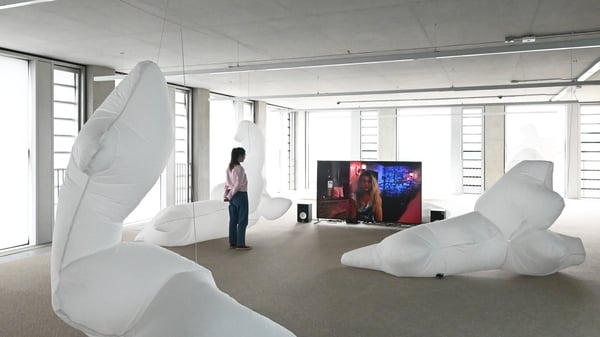In 2023, TULCA celebrates its 21st year, the annual visual arts festival of exhibitions and events takes place across Galway city, with contributions from 15 artists and two collectives, writes Frank Wasser.
This edition, curated by writer and curator Iarlaith Ní Fheorais, is titled 'honey, milk, and salt in a seashell before sunrise,' inspired by an ancient Irish folk cure which gestures towards evolving contemporary notions of cure and care and their relationship to land.
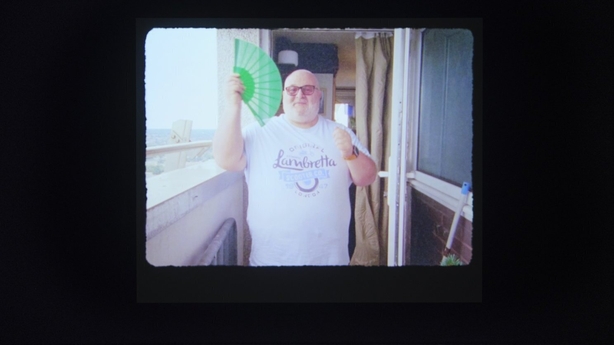
The festival is comprised of a selection of exhibitions, events and publications created by artists and writers invited by the curator and selected from the annual open call. Taking into consideration the West of Ireland historically as a landscape of medical infrastructure and control, from St Brigid's Mental Health Hospital in Ballinasloe as a symbolic site of institutionalised mental illness, to the medical device factories currently situated around Galway city, this year's open call invited artists 'to consider their own regional relationship to medicine.’
Listen: Frank Wasser reviews TULCA 2023 for RTÉ Arena
Stemming from the generative and meticulously comprehensive curatorial research of Ní Fheorais, the 2023 festival also pays tribute to J.J. Beegan, an artist from Ballinasloe. During his time at the Netherne Mental Hospital in Surrey, England, Beegan recalled his childhood home through sketches. His drawings were made using charred matches on institutional toilet paper, or sometimes using stubs of blue pencils on pages torn from The Works of Robert Louis Stevenson. Beegan frequently identified himself, his occupation, and his hometown, accompanying his depictions of flowers and birds with the inscription: "J.J. BEEGAN SCULPTERER DUNLO HILL BALLINASLOE." which calls back to his home and roots. Too delicate to travel, reproductions of Beegan's drawings adorn the branding and publications that accompany this year's festival and they act as a reminder of the troubled histories of institutionalisation and its link to colonialism.
The festival is comprised of a diverse range of talks, workshops, tours, screenings, and performances which unfold inviting contemplation on how legacies determine landscapes and communities alike. These events delve into the profound impact on our self-perception and the definition of what constitutes as a home. I wandered around Galway taking in the festival, which shaped my understanding of the history of the city and the cityscape itself.
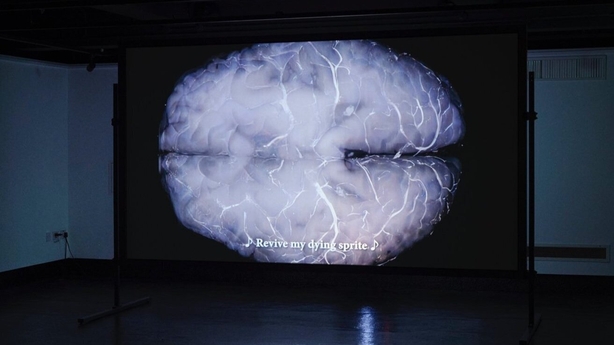
Everything in the festival feels carefully considered and accessible. There are wall based works hung at 110cm from the ground in contrast with the so-called standard height for hanging (which is 150cm from the ground). There are audio descriptions of the works which are available in the spaces and transcripts of the audio artworks are also available on TULCA’s website. There are spaces to retreat and rest in, most notably Faery Fort (2023) at Outset gallery by the Berlin-based Irish collective Bog Cottage. I was able to see much of the festival across one afternoon and morning without feeling overwhelmed.
The list of contributing artists are: Áine O’Hara, Aisling-Ór Ní Aodha, Anna Roberts-Gevalt, Bog Cottage, Bridget O'Gorman, Edward Lawrenson & Pia Borg, Holly Márie Parnell, Jamila Prowse, Jenny Brady, Leila Hekmat, Nat Raha, P. Staff, Paul Roy, Philipp Gufler, Rouzbeh Shadpey, Sarah Browne and Sean Burns.

It is also worth noting that there is a programme and publication which also features the writing of Alan Counihan, Carol R. Kallend, Joanna Marsden, Nat Raha, Roisin Agnew, Sami Schalk and Tone F Pone + Inky Lee.
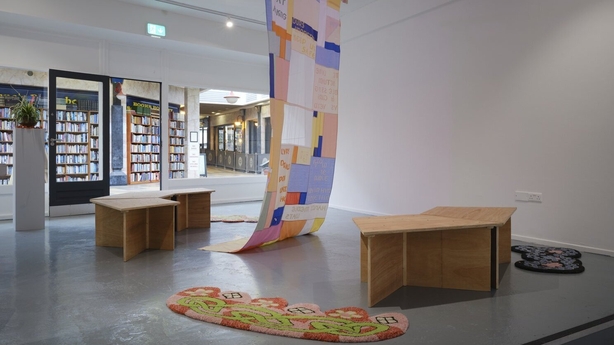
In recent years Iarlaith Ní Fheorais has curated exhibitions which radically reconsider how an audience can invited to gather, and this festival is no exception. In bringing together this festival she has opened up spaces that necessarily and genuinely make art accessible to wider and diverse communities. This festival continues her rigours practice of manifesting urgent and innovative approaches to curating.
Below are some of my highlights, although, it really is worth spending time seeing everything.
1. Holly Márie Parnell - Tulca Gallery
Holly Márie Parnell is exhibiting a moving image work in collaboration with David Parnell and June Parnell, the artist's family. Parnell is an Irish/Canadian artist based between Wexford and Glasgow, working in film and expanded cinema. In Cabbage (2023) she focuses on the lived experience of her brother, David Parnell, honing in on his texts crafted with the aid of eye-tracking technology. Parnell weaves together personal and medical accounts with insights from both David and their mother June. The film intertwines recollections and contemplations on a spectrum of subjects, ranging from the ordinary details of everyday life to questions of disability. Parnell has brought together a moving and tender portrait of her family while exploring the intricate dynamics between empathy and the politics of care all at once exposing the violence, ablism and often limiting parameters of institutional bureaucracy.
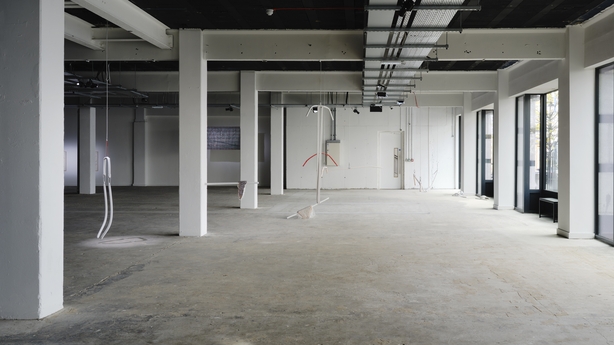
2. Bridget O’Gorman - Tulca Gallery
Jesmonite forms hang delicately and somewhat precariously from supports in a sculptural installation by Bridget O’Gorman. These beautifully intricate and delicate works invite the viewer to reflect upon ideologies and systems of support. The work creates a tension in the body of this viewer, it seems like the weight of the material might at any point create its own undoing or that the sculptural tube like forms might at any point slip from their supports amd smash into pieces. O'Gorman is a visual artist and writer. She uses text, live event, video and sculptural installation to explore the body as material, considering otherness, the speculative and expanded corporal experience. Ní Fheorais has worked closely to produce these works with O’Gorman. The contextual text which accompanies the work declares that ‘O’Gorman recently reached an impasse in the way that she works due to the deterioration of a permanent spinal injury known as Cauda Equina Syndrome.’ This is an artist who’s practice deserves close attention.
3. Patrick Staff - Galway Arts Centre
Situated in Galway Arts Centre, the venue which originally initiated the Tulca festival, is an engrossing moving image work by Patrick Staff titled Weedkiller (2017). The video piece is looped in such a manner that it is difficult to know what is the beginning and what is the end but this strengthens the work’s messy consideration of illness and gender. The focus of the work is a monologue carried out by an actor reflecting on the memoir of the artist and writer Catherine Lord titled The Summer of Her Baldness (2004). The memoir is an account of cancer. Other parts of the video show the artist Jamie Crew delivering a mesmerising lip-synched performance of a love song in a gay bar, a version of To Be in Love (1999) by Masters at Work, which has been altered and adapted by Staff. The song invites the viewer and listener to consider love itself as an intoxication, an illness in it’s own right. The song lingers in the head long after the viewing of the work.
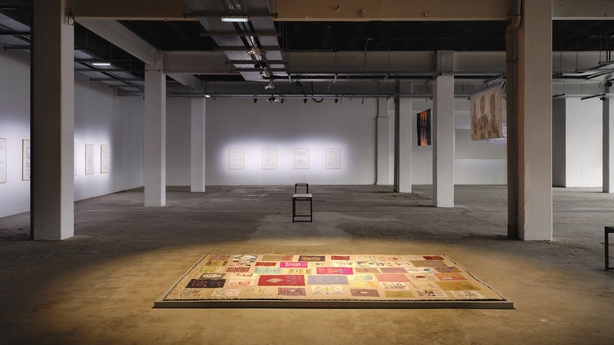
4. Jamila Prowse – Tulca Gallery
My eye is drawn to Jamila Prowse's Crip Quilt (2023) which is situated on the ground in the middle of Tulca Gallery. I’m drawn to a patch which has the text ‘I slept through Frieze’ sown into it. Frieze art fair is an annual art fair in London which is debatably one of the must see events of the art world’s calendar. Although considered as a must-see event, it can often be a overwhelming experience and one that is not very accommodating for a disabled audience. This artwork is a project made by the artist Jamila Prowse, with support from Divya Obson. The quilt is handstitched by Prowse describing through text and images the experience of many disabled artists’ lived experiences and their negotiating of the day to day working life of being a disabled artist. Another patch (of which there are 50) reads ‘DISABLED PEOPLE AGAINST CUTS’. The work is made from oral histories taken from the National Disabilty Art Collection and new oral histories which have been collated by Jamila with disabled artists of colour.
5. Sarah Brown – Galway Arts Centre
Sarah Browne has brought together a collaborative film making project, Echo Bones (2023) with autistic young people living in the Fingal area of North County Dublin. The title of the project is borrowed from an unfinished play by Samuel Beckett. The dialogue at times echoes the witty delivery of lines in a Beckett play. Entering the work I see and hear on screen two figures with their backs turned to the camera one asking the other ‘how does the sea say hello’, to which the reply is ‘with waves’. The project questions how and why neurodivergent communication can be overlooked in the everyday whilst being widely appreciated in forms across the arts. The work is comprised of not only film but also extracts of a ‘scensory score’ which resemble the well documented theatrical notebooks of Samuel Beckett.
TULCA is at various venues across Galway city until November 19th, 2023 - find out more here.
About The Author: Frank Wasser is an artist and writer. He is a DPhil candisate at the University of Oxford. Wasser is a lecturer in both Fine Art and Critical Studies at Goldsmiths, University of London.

